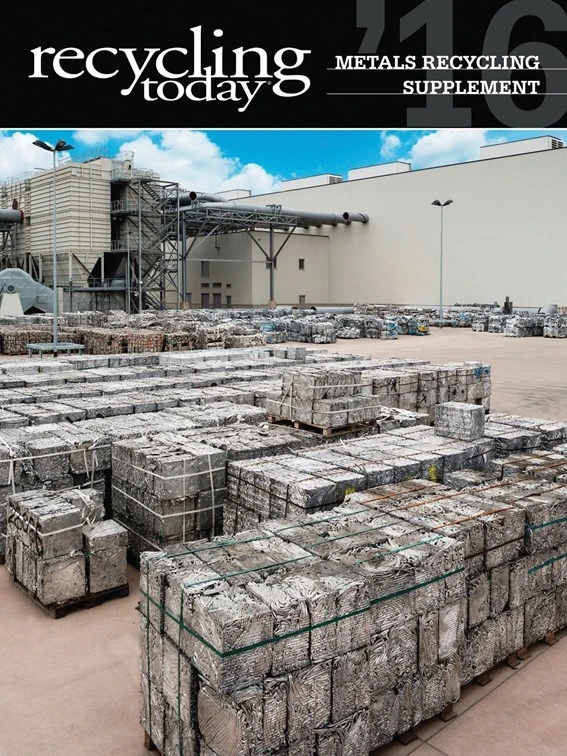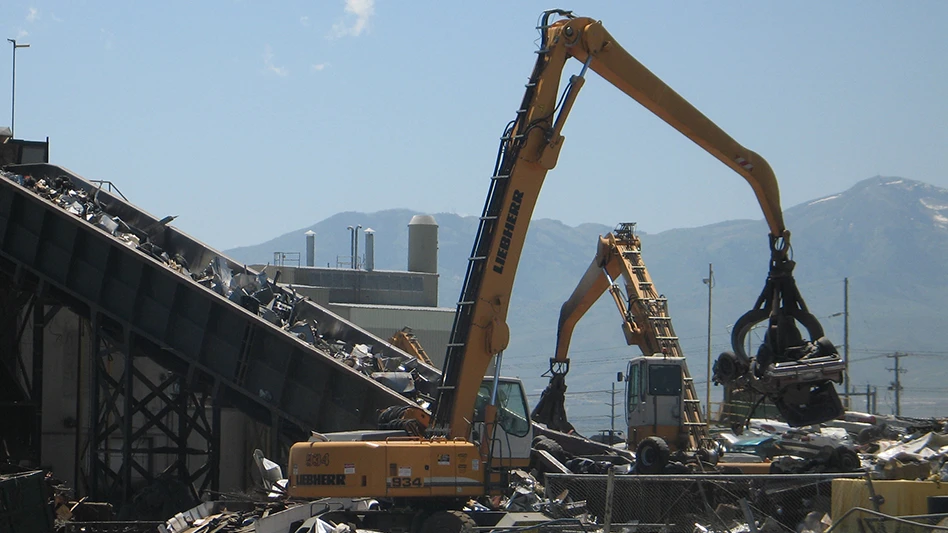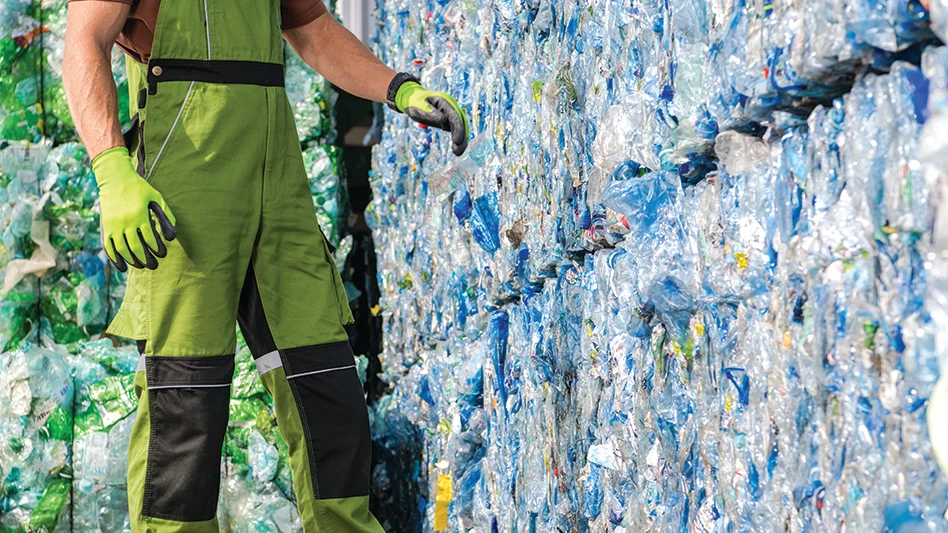
Following a period of rapid growth, the scrap recycling industry has entered into a period of contraction. Despite the environmental benefits of recycling, the monetary value of scrap metal and the employment opportunities it offers, the industry is relatively unstable now, and so the ability to make a profit in the global recycling business is more challenging. Nevertheless, experienced recyclers historically survive, or even profit, in such downturns simply by finding new and creative ways to cut costs and upgrade inventory value.
The modern way to improve profitability and reduce the costs associated with the processing of scrap materials is to achieve fast and accurate identification of the most valuable alloys. Getting the grade right the first time ensures that metals being sold for manufacturing are the appropriate quality and that scrap yard owners get the best price possible.
THE SCRAP YARD CHALLENGE
Depending on the alloy grade, materials and parts leftover from manufacturing or decommissioning can be found in scrap yards. These materials will be sorted and later sold to larger yards for consolidation or directly to smelters.
Since the economic downturn, many cost-conscious members of the public sector are no longer simply disposing of their metal scrap; they are selling it to produce incremental income. As a result, scrap yards have seen a rise in noncommercial scrap, that is, people and/or small businesses selling their unwanted scrap to yards. Instead of buying from the manufacturer and selling to the public, like most businesses, scrap yards are in fact collecting from the public and selling to the smelter or manufacturer. This peddler traffic offers a low-cost supply of material to the industry, and it also allows manufacturers to use recycled materials in their new goods.

However, peddler traffic brings the challenge of accurately identifying what often may be relatively small quantities of scrap materials. This is not always a simple task, as alloys that contain light metal elements can be notoriously difficult to sort quickly in the field. If sorters are not able to distinguish all metals grades, the consequence can be sorting mistakes and, ultimately, the more expensive and profitable metals may be sold unknowingly at a lower price, resulting in a loss of income and the rejection of a load.
IDENTIFICATION METHODS
The scrap metal recycling process involves many steps to determine metal grade. Methods and devices such as chemical spot testing, spark testing, thermal conductivity meters and hand-held X-ray analyzers are the norm. Metal samples also can be sent to a laboratory for analysis, but this can be time-consuming, costly and inefficient. Therefore, to gain a competitive business advantage, scrap yards need a fast, accurate and reliable way to identify metals and their quality.
Hand-held analyzers provide the means for rapid material identification, helping to save valuable time and money while upgrading inventory value. However, many analyzers are not able to accurately measure light atomic number elements or can only do so after extended measurement times. Additionally, they do not offer the required durability and ruggedness to withstand harsh environments. This can result in loss of money from inefficient sorting or incorrect identification of alloy grades.
Damage to analyzers that are not optimized for use in the yard could result in costly repairs with the added inconvenience of not being able to sort scrap while the device is out of commission during repair.
In addition to these challenges, some hand-held analyzers require annual registration and licensing fees.
A NEW TOOL
Laser-induced breakdown spectroscopy (LIBS) offers a new way to identify elemental composition (both heavy and light elements) in a solid, liquid or gas. The LIBS process works through the creation of a plasma at a high temperature using a laser source that ablates the sample mass. As the plasma cools, it emits characteristic light frequencies that are collected for analysis and material identification.
Each element in the periodic table has a number of unique LIBS spectral peaks. These peaks are collected and integrated to calculate the concentration of elements, such as metal alloy composition.
LIBS works well for metal analysis because, unlike the other popular analytical technique X-ray fluorescence (XRF), it is extremely sensitive for light atomic number elements and matrices. LIBS technology can be an ideal tool for measuring light elements and identifying metal alloys, such as the most popular aluminum grades 1100, 6061 and 6063, as well as aluminum and silicon brasses and bronzes or beryllium coppers.
Traditionally a lab-based technique, LIBS is now available in a miniaturized hand-held form thanks to the development of compact spectrometers and solid state microlasers.
Scrap metal sorting with a tool that can be used easily in the yard is ideal. The handheld LIBS’ ability to quickly analyze light elements means scrap yards can now identify even more metals and alloys at a faster rate than afforded by the traditional use of XRF.

An example of this new generation metal alloy analyzer is Katana, recently launched by Rigaku Analytical Devices, Wilmington, Massachusetts. This hand-held device uses Breakthrough Laser Ablation & Detection Engine (BLADE™) technology and weighs 3.3 pounds. The analyzer features QuickID software, and its identification algorithm determines the grade of tested alloy by matching it to the alloy grade library, displaying the grade along with the percentages of the individual elements.
How can a hand-held LIBS analyzer benefit scrap metal recyclers? Users now can identify a wider range of metals and alloys more quickly and with good accuracy. Ultimately, this will help the scrap industry maximize the benefits of peddler traffic with on-the-spot analysis of incoming and outgoing scrap metal.
However, while the scrap recycling industry has undoubtedly benefitted from the boom in peddler traffic, the value of scrap metal and demand for scrap metal is currently fluctuating, which has a significant effect on the profit margins of recycling companies. The introduction of technologies that help scrap yards sort metal more quickly and with better accuracy for higher returns are therefore essential to the future of a strong scrap recycling industry.

Explore the Jan 2016 Metals Recycling Supplement Issue
Check out more from this issue and find your next story to read.
Latest from Recycling Today
- Celsa UK assets sold to Czech investment fund
- EPA releases ‘National Strategy to Prevent Plastic Pollution’
- South Carolina launches recycling app
- Resource Recycling Systems transitions to employee ownership model, refreshes branding
- APR upgrades PCR certification program
- WM completes $40M automation project at Philadelphia MRF
- Speira commissions new furnace in Germany
- ABB report portrays paper sector circularity, emissions reduction





